|
|
.With only lacquer phonograph discs at their disposal, amateur recordists were few and far be tween as World War II ended. But by the time the War’s dust settled and people had put their lives back together, disc recorders were fast giving way to a tape deck, the Brush Sound-mirror. The Soundmirror used quarter-inch open-reel tape manufactured by 3M; otherwise, how ever, it was an imprecise predictor of what was to come.
That first 3M Scotch recording tape had a paper backing and a black oxide magnetic coating. By switching to an acetate substrate with a brown oxide coating, 3M could accommodate the decks that were then under development by Ampex. The result was the classic Scotch 111 recording tape, the foundation of everything that was to follow.
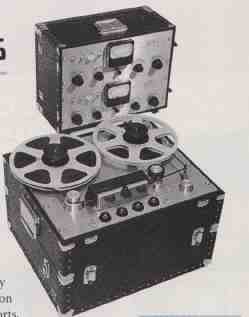
ABOVE - When this Ampex 350 first appeared, it was considered portable.
Magnecord was the first transport manufacturer in the United States to realize that portability might be an important asset for live recording. Unfortunately, the first “Maggie” design chose its own route through the EQ/bias forest; tapes recorded on it never really sounded right on Ampex transports, which had become the standard in professional work. But since few amateurs could afford an Ampex, Magnecord found a market in the semipro field.
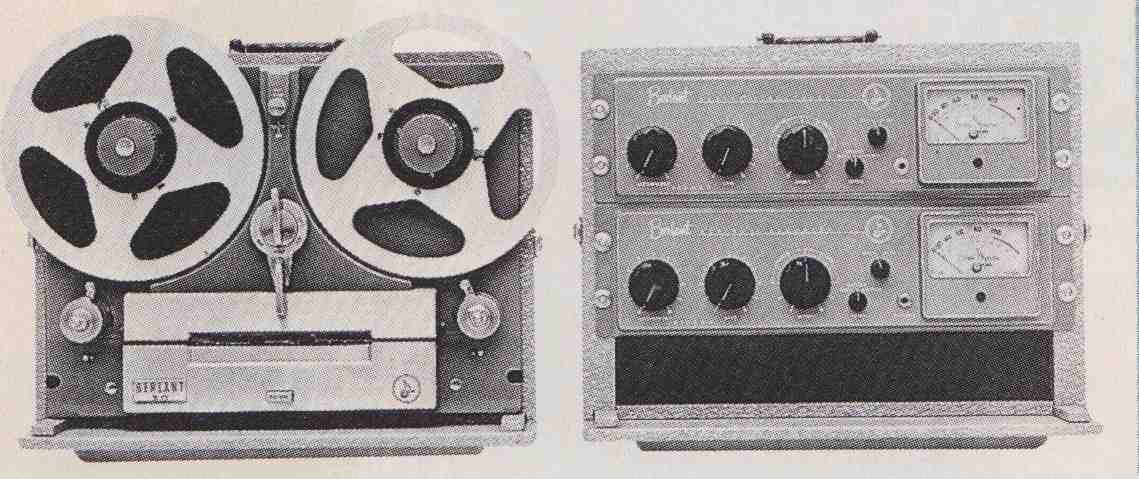
ABOVE - Regarded as semiprofessional, the Berlant Concertone had line and
mike mixing inputs.
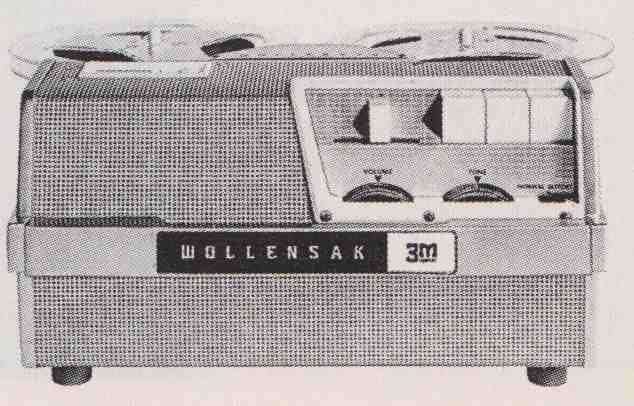
ABOVE - This 3M Wollensak model was a best-seller for years.
The brand of hi-fi choice by the early 1950s, however, was Concertone. By the mid-’50s, even less expensive decks began appearing in profusion—Pentron, Wilcox-Gay, Webster-Chicago, Wollensak, and many other companies had be gun turning out recorders of various descriptions. Several later models, such as the Pentron Dynacord, aspired to pro or semipro status, but their performance fell short and the companies that manufactured them have mostly disappeared.
A transport speed of 15 inches per second had become the de facto standard in pro work; some engineers preferred working at 7½ ips for sounds (such as pipe organ) that were rich in very long wavelengths, which recorded better at the slower speed. The early rule of thumb was that the transport speed (in ips) more or less coincided with the highest frequency (in kilocycles per second—kHz, to us) that could be properly recorded at that speed. In other words, a tape recorded at 15 ips should remain quite flat up to at least 15 kHz, and response at the new, budget consumer speed of 3¾ ips might be rolling off by about 4 kHz. But tapes, heads, transports, and electronics were all improving steadily, gradually extending high-frequency response at the slow speeds.
The eventual leader in the inexpensive-pro/premium-consumer market was Crown International, which began with a recorder resembling the Maggie but soon switched to a format more like that of the Ampex 350 studio deck. Crown International was, in fact, the only American company to stay in the semipro field for long. Its counterpart at the low end of the consumer field in the late 1950s and early 1960s was Viking.
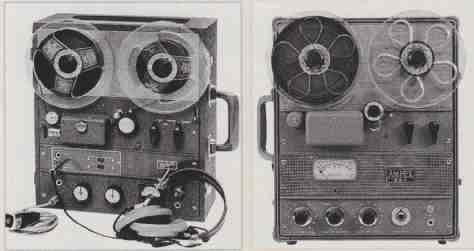
ABOVE Some of the Akai-built Roberts models (far left) were styled to resemble
Ampex’s professional 600 Series.
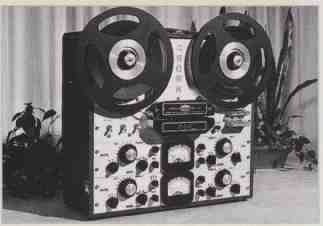
ABOVE - The Crown 800 ran at 7½ ips and either 15 or 3¾ ips, depending on the
setting of a rear-panel selector.
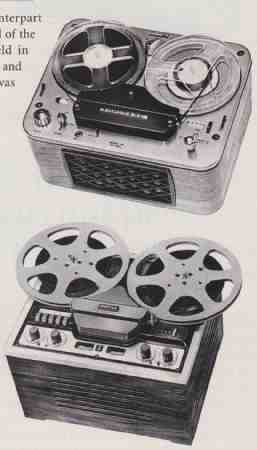
TOP and ABOVE - Tandberg made the 1 7/8 speed respectable, paving the way for
acceptance of the cassette; The Revox Model G36’s photosensitive tape break
switch would also stop the tape wherever you rubbed off the oxide or spliced
in some transparent leader.
Of the challenges that these companies had to face in the ‘50s, the most daunting was stereo. Early recorders had used the full width of the ¼-inch tape as a single track, so it could be recorded or played in one direction only. For consumer use, a double-sided “half-track” format soon became the standard. Its mono track occupied a little less than half the tape width for each direction of travel. The earliest stereo format preserved that track for one channel and added a second head, a short distance away, to record and play the other channel from the tape’s other track. But single heads equipped for both channels quickly replaced this “staggered-head” kluge with what came to be known as stacked-head or in-line-head stereo. In the mid-1950s, Pentron offered a model that could play both stereo formats.
Tandberg of Norway set the field on its ear in the late ‘50s by introducing quarter-track recording and the l transport speed. This new slow speed doubled recording time yet delivered surprisingly respectable sound. The quarter- track head configuration interlaced the tracks for the two directions of travel, permitting stereo in both directions and again doubling recording time per tape as compared to half-track stereo. Tandberg’s formula eventually inherited the earth, and the vast majority of prerecorded tapes manufactured—most of them by Ampex—used this format.
By the early ‘60s, some European brands and OEM versions of Japanese recorders had begun to dominate the United States market. Aside from Tandberg, Uher was most prominent among the Europeans, followed by an early Revox model. The Japanese entries were led by Sony, sold under its own name by Superscope; Panasonic models, sold under the Concord brand name; and Akai decks, originally sold here under the Roberts brand. Teac was yet to come but would be among the leaders by the end of the decade.
One American company bravely ventured into this field in the mid-’60s: KLH. Henry Kloss, its CEO, reasoned that if a simplified version of the recently introduced Dolby professional noise-reduction system could be applied to a home deck, then the major failing of 3¾ ips and slower speeds, audible hiss, might be conquered and a new ratio of performance per tape dollar achieved. Although the resulting Model Forty-One deck was a failure commercially and is generally blamed for delivering the coup de grace to KLH, its influence lingered.
Throughout the ‘50s and ‘60s, designers struggled to make open-reel tape easier to handle. Ampex and Bell & Howell offered automatic tape threading, Akai was among the earliest with auto reverse, and Sony even had an open-reel changer, which always attracted attention at hi-fi shows but made little dent in the market. Most of these designs proved problematic.
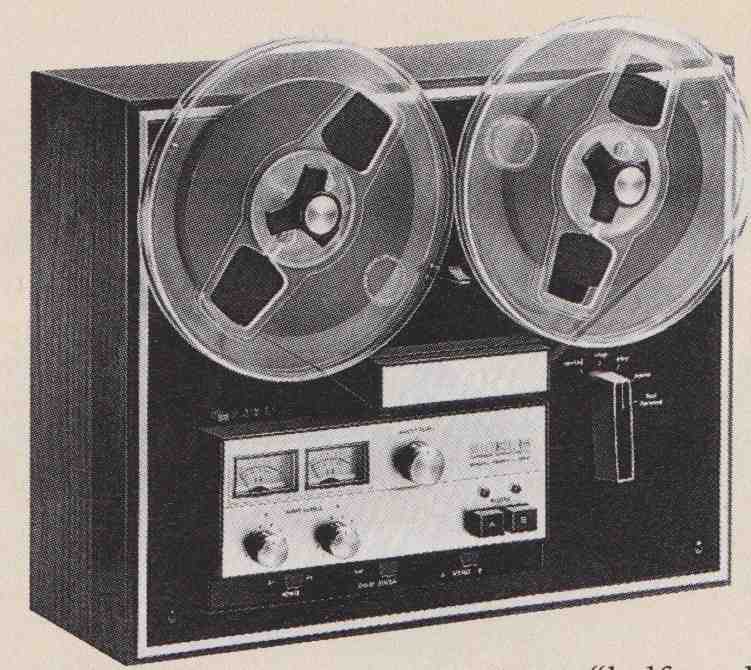
ABOVE-KLH’s Model Forty-One was the first home deck with Dolby noise reduction.
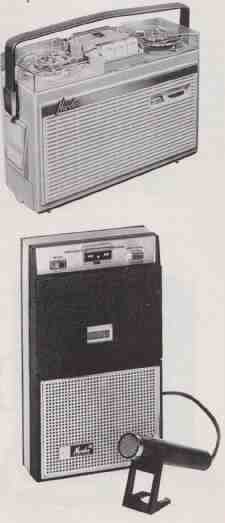
ABOVE-Before the cassette came, most portable recorders resembled this Philips-built
Norelco open-reel model. The early Norelco cassette recorder was far more portable
and convenient, but its innocuous appearance belied the revolutionary impact
the format would have.
The housebreaking of magnetic tape had to await a pop- in format that required no handling of the tape itself—i.e., the cassette. By 1965, that format was a fact, but certainly not a factor. Philips had designed the Compact Cassette as a dictation medium, although some few mono music cassettes were beginning to appear in France. Short- term, several other convenience formats had already been successful. The Muntz 4- track cartridge, for example, enjoyed great popularity in cars and homes for a time but gave way to the Lear Concord’s Mark 8 could Jet 8-track cartridge, which was otherwise similar, play open-reel or 8-track Other convenience formats failed ignominiously, tapes.
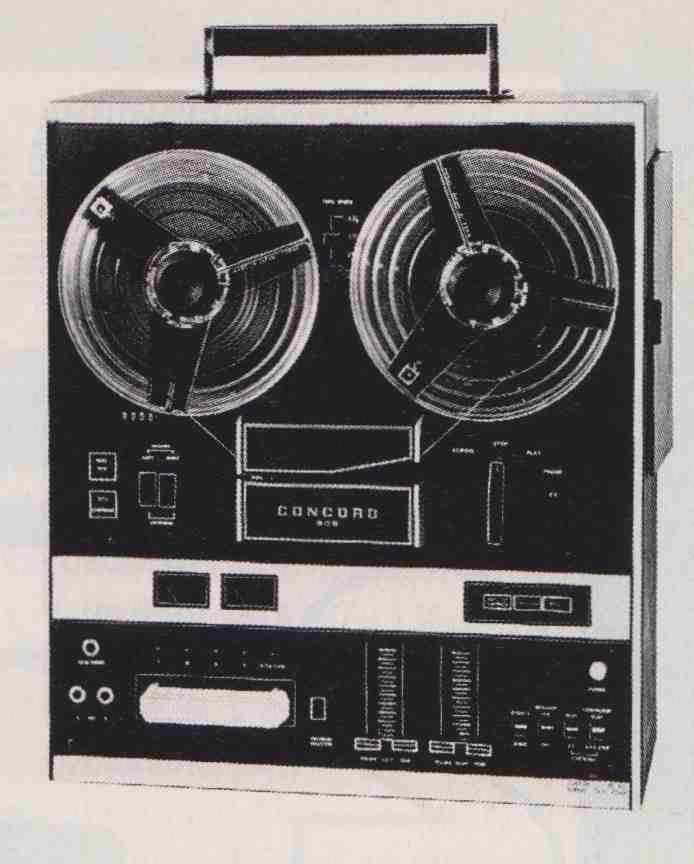
ABOVE - Concord’s Mark 8 could play open-reel or 8-track tapes.
But Philips had given its cassette one sterling property: free, though required, licensing. That is, to make use of the patented Philips design, manufacturers had to sign a royalty-free licensing agreement that stated they could not alter any of the design’s specifics. Compatibility of all manufacturers’ products was thus assured. And the design was basically good, if utilitarian: half-track mono in each direction, at 1 7/8 ips.
Advent Corporation, started by some of the KLH crew, was the prime mover in getting Philips to relax its licensing and permit a modern stereo cassette deck. The elements needed were the Kloss-inspired Dolby B noise reduction, altered equalization (needed for maximum hiss suppression with the equally new duPont Crolyn chromium dioxide tape), and the stereo track format itself. The resulting high-fidelity decks set a standard that remains to this day.

ABOVE - Ray Dolby in front of an Advent Dolby noise-reduction box and cassette
deck.
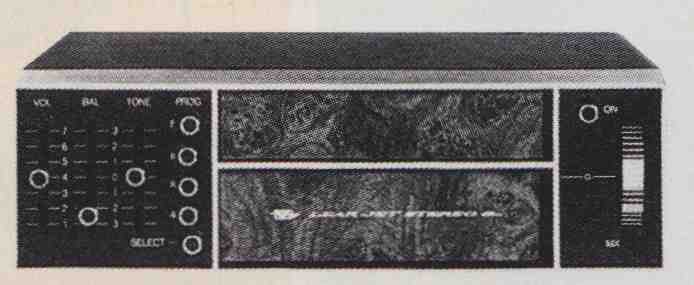
ABOVE - The Muntz 4 track tape cartridge player (top left) gave way to Lear
Jet’s 8-track system.
The primary introductions over the next several years concerned noise reduction and related matters. Around 1980, it was a question of using either dbx or Dolby C to fight tape noise, with the latter finally gaining the upper hand. Then came Dolby’s HX Pro headroom ex tension system, followed by the Dolby S noise-reduction system. Otherwise, the cassette has remained fundamentally unchanged, despite continuous up grades in tape formulations. In later years, cassette decks acquired a host of bells and whistles: automatic reverse, programmable playback, automatic switching of bias and EQ, bias fine-tuning, dual-well transports, and many more. In the end, open-reel survived mainly for its one unique capability, editability, which left it filling the tiniest of audiophile niches.
By the late 1980s, there were rumors of home digital tape for mats in the industry’s R&D labs. First to surface—and now the tape medium of choice among most serious audiophiles—was DAT. The more recent CD-R (recordable CD) shares DAT’s use of conventional linear PCM audio coding. Audiophiles seem less confident in the lossy compression systems of the DCC (on which Philips is said to have ceased production) and Sony’s MiniDisc. Waiting in the wings is the recordable DVD, though its enormous capacity may be overkill for most home recording purposes.
Adapted from Audio magazine (1947-2000). Classic Audio and Audio Engineering magazine issues are available for free download at the Internet Archive (archive.org, aka The Wayback Machine)